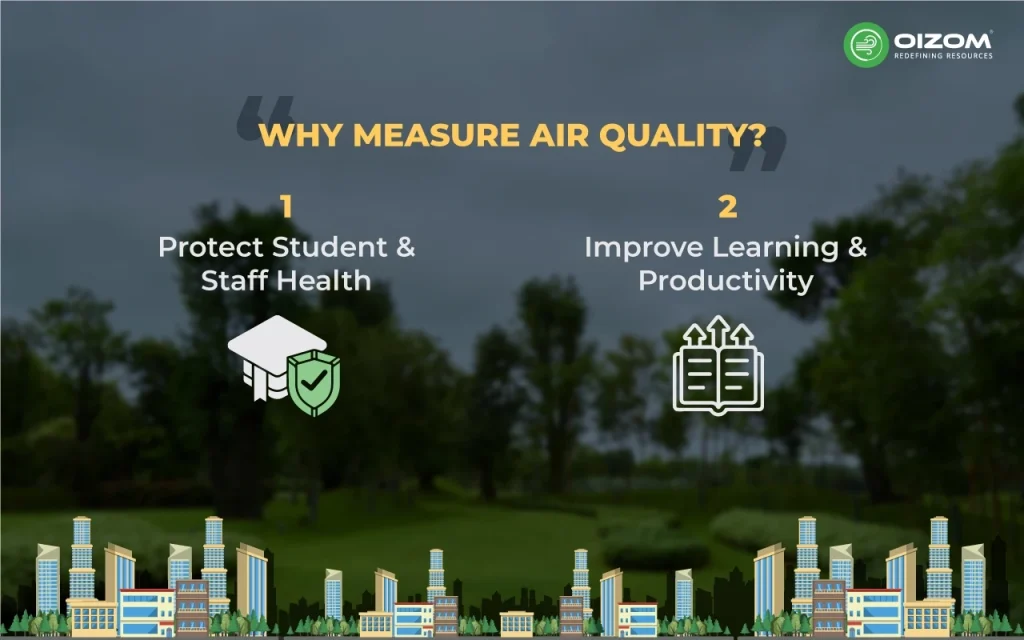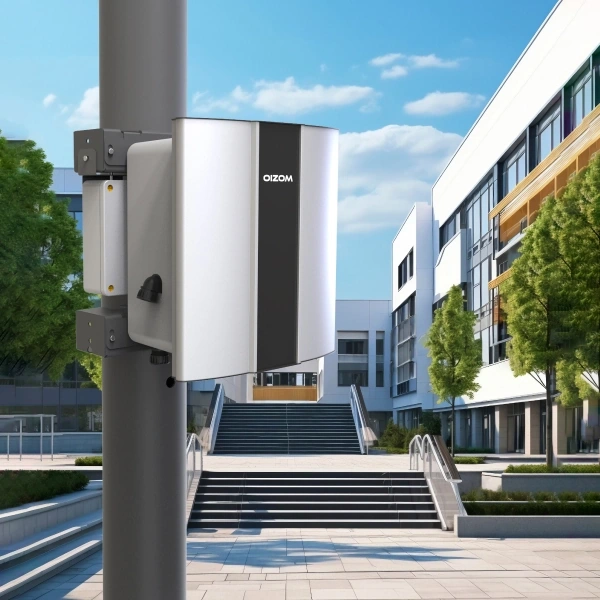Summary of Blog
Have you ever wondered about the air quality your kids breathe at school? Well, it’s a big deal. Poor indoor air quality can affect their health and academic performance. But don’t worry; I’ve got your back with detailed insights. Kids spend most of their time in school, and if the air quality is bad, it can impact their growth and even lead to serious health issues. Luckily, many schools are now taking action by monitoring air quality and making improvements where needed. By measuring air quality on a real-time basis, schools can pinpoint problem areas and take steps to fix them, like upgrading ventilation systems or using low-emission materials. And guess what? Better air quality means healthier, happier students who perform better in class. So, let’s join hands to ensure our kids breathe in nothing but the best at school.
Importance of Air Quality Measurement in Schools & Campuses
Were you aware of this at school? Are your kids breathing in safe and good air? Most of the parents are not right! Don’t worry; I am here to guide you through the importance of air quality measurement in schools and campuses. Now that the official back-to-school season has begun, kids will return to their designated learning locations. It also implies that teachers and kids will experience the conditions brought about by indoor air quality (IAQ).
One of the groups most susceptible to bad air quality is children. Air pollutants like fine particulate matter (PM2.5) might impact their growth, brain development, and mental health. Furthermore, the effects of bad air quality can persist into adulthood and cause major illnesses like heart disease. In an effort to safeguard the health of students and faculty, local governments and school districts have also aggressively established high-resolution air quality monitoring networks in and around school campuses. These networks gather data at the neighborhood level and make the public aware of the air quality. Today, we will discuss air pollution in schools, how it affects kids, and what you can do to reduce it.
Why Measure Air Quality?

Enhancing indoor air quality in schools is essential to protecting staff and students’ health, happiness, and efficiency. The Environmental Protection Agency (EPA) claims that the air pollution level inside schools can range from two to five times that of the outside air. Inadequate air quality can cause various health concerns, including allergies, respiratory disorders, and poorer academic results. To enhance air quality in schools, locating and monitoring the sources of air pollution is crucial.

1) Protect Student & Staff Health:
Poor air quality on school campuses affects staff, instructors, and students. Unfortunately, students and staff are frequently exposed to outdoor pollution because schools are typically close to major roads and have hours that coincide with periods of heavy traffic. Implementing road side pollution monitoring near school zones can help identify pollution spikes during peak hours and enable proactive measures to reduce exposure.
Also, encouraging action to tackle school air quality problems early on can significantly impact the well-being and productivity of teachers, staff, and students. Good indoor air quality helps to create a healthy learning environment and results in better health and learning outcomes.
2) Improve Learning & Productivity:
Improved indoor air quality in schools has several advantages. It has been demonstrated to raise attendance and academic performance, increase kids’ attention periods, and reduce the need for teachers to step in to keep the peace.
Some of the benefits of improved indoor air quality in schools are:
- Improved student performance and attendance.
- Increased time students spend on the task.
- Reduced the need for teachers to intervene.

How Does Measurement Help?
Understanding and tackling various challenges, from environmental concerns to improving educational environments, depend heavily on measurement. Air quality measurement gives useful information that schools can use to identify problem areas and take appropriate measures to protect the health and safety of staff and children.
How air quality data allows schools to pinpoint problem areas
Schools can use data analysis tools and air quality monitoring equipment to determine the exact quality of air inside their buildings. These instruments monitor a variety of contaminants, including carbon monoxide, volatile organic compounds, and particulate matter, giving users real-time information about the state of the air.
By examining this data, schools can determine which regions have poor air quality, whether because of local sources of pollution, insufficient ventilation, or other factors. For instance, greater pollution levels in classrooms near busy highways or industrial regions may adversely affect teachers’ and students’ health and ability to concentrate.
Make Informed Decisions
Keeping up with the most recent findings in news and research on air quality can assist schools in implementing evidence-based procedures to improve the air quality inside their buildings. Furthermore, parents and guardians should actively communicate with school administrators to support projects and regulations that prioritize healthy indoor air quality.
Scheduling outdoor activities based on pollution levels
- Watch the news and reliable social media sources for local and regional public health air quality alerts.Even better, look up the AQI values on your devices for your area.
- When the air quality is bad, postpone or cancel outdoor events.
- If you practice near a busy road, schedule outside activities when traffic is at least.
Prioritizing maintenance needs
But if the inside air quality problems are not addressed and preventative measures are not taken, schools may experience the following issues:
- If maintenance and preventive measures are not followed, problems that require expensive repairs and eventual closures of schools or rooms may arise.
- decreased effectiveness of school facilities and apparatus
- bad press and strained ties between parents, educators, and the school administration
- heightened risk and responsibility
Upgrading ventilation systems in problem areas.
- Natural ventilation may refresh indoor air without extra energy; however, this depends on the presence of high-quality outdoor air.
- For reduced carbon emissions, use mechanical or hybrid ventilation with suitable filtering systems that are preferably driven by on-site or off-site renewable energy sources.
- Low or zero-VOC (volatile organic compound) furnishings, materials, and cleaning supplies lower IAQ baseline levels.
Implementing Measurement Strategies
Encouraging action to tackle air quality problems in schools early on can significantly impact the well-being and productivity of teachers, staff, and students. Once the causes and levels of air pollution have been determined, the following actions can be taken to enhance the indoor air quality in schools.
Choosing Monitoring Systems:
With children spending 18.5% of their time in classrooms, schools are the second most significant environment that impacts their development. Improving the air quality in schools is essential to ensure that kids grow up safe and healthy. With real-time data from air quality monitors like Polludrone, educational institutions can track pollution levels, pinpoint pollution sources, and implement specific improvement plans. Additionally, it can encourage students to participate in air quality projects by getting them more interested in monitoring the air quality.
Campus Monitoring: Dayalbagh Educational Institute and Granada University have installed Oizom air monitoring devices on their campuses. This helps them monitor air quality alerts and make informed decisions about keeping students safe.
Taking Action Based on Data:
After installing air monitoring devices across the campuses, the local body or the schools can take action and plan mitigation strategies based on real-time data. Schools can schedule outdoor activities based on the AQI. If the AQI worsens, the school can postpone or reschedule the activities. However, taking an action based on real-time data can be very effective.
Conclusion
Finally, the above information might raise parents’ awareness of good air quality in schools. There are no overnight solutions to our challenges in terms of outdoor and indoor air Pollution. In conclusion, maintaining the health, happiness, and productivity of school students and staff depends on indoor air quality. Poor air quality can result in low academic performance and other health issues. Therefore, regular monitoring and taking steps to improve air quality in schools are crucial. Most parents* would like an indoor air quality assessment carried out in schools, but they often lack the resources to make an impact. Informing teachers and school directors of the problem is a first step. Together, we can be informed and change our daily habits and the community to improve air quality.






